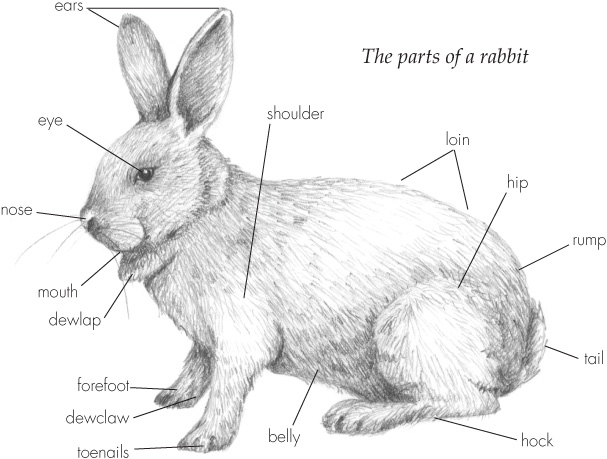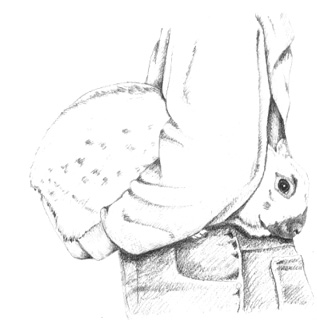

A new rabbit has many adjustments to make. Give your rabbit a few days to get used to you and its new surroundings before you handle it a lot.
Get to know your rabbit in a setting where both of you can be comfortable. A good place to get acquainted is at a picnic table covered with a rug, towel, or some other covering that will give the rabbit secure, not slippery, footing. Your rabbit will be able to move around safely on the table, and you can safely visit and pet your rabbit without having to lift it. Rabbits will usually not jump off a table. In spite of this, never leave a rabbit unattended when it is out of its cage.
Once your rabbit seems comfortable on the table, practice picking it up. Because the table offers a handy surface to set the rabbit safely back onto, this setting is much better than risking a possible fall to the ground.
The best way to pick up a rabbit is to place one hand under it, just behind its front legs. Place your other hand under the animal’s rump. Lift with the hand that is by the front legs and support the animal’s weight with your other hand. Place the animal next to your body, with its head directed toward the corner formed by your elbow. Your lifting arm and your body now support the rabbit — just like tucking a football against you. Your other hand is free and can rest on the rabbit’s back for extra security. Place the animal gently back on the table and repeat this lift.
To help your rabbit become comfortable with being carried, practice handling skills often, but for short periods of time — 10 to 15 minutes at a stretch.

A “football hold” is a secure way to carry your rabbit.
Sometimes an overactive or frightened bunny will struggle and get out of control. When this happens, drop to one knee as you work to quiet your animal. Lowering yourself to one knee lessens the distance the rabbit has to fall and provides a more secure base for a frightened rabbit. You can also easily set the animal on the ground from this position, if necessary. After it’s had a short rest on the ground, carefully and securely lift the rabbit again. Even the most mild-mannered rabbit can have a bad day, so be prepared to handle any situation in a calm, controlled manner.
After you master lifting and carrying your rabbit, you will want to learn how to turn it over; you’ll need to get it in this position in order to better observe its teeth, its toenails, and its sex. You can’t see everything about a rabbit just by looking at the top!

If your rabbit starts to struggle while you are holding it, drop to one knee.
Turning a rabbit over puts the animal into a very unnatural position. First, its feet are off the ground so it cannot run away, and second, to make matters worse from its point of view, its underside is now exposed. A wild rabbit in this position is probably one that is about to be eaten by a predator! Your rabbit has good reason to resist this type of handling, so be especially careful and patient.
Practice turning your rabbit over back at the table where you first learned how to lift and carry it. Again, you will want a rug on the table, and wear a long-sleeved shirt.
To turn the rabbit, use one hand to control the head and the other hand to control and support the hindquarters. Place the hand that holds the rabbit’s head so that you are folding its ears down against its back, while you reach around the base of the head. If you prefer, you can place your index finger between the base of the rabbit’s ears and then wrap your other fingers around toward its jaw. With your other hand, cradle the rump. Now that your hands are in place, lift with the hand that is on the head and at the same time roll the animal’s hindquarters toward you. Try to do this movement in a smooth, unhurried manner.
If your rabbit cooperated, you will now be able to let the table support its hindquarters. This will free the hand that was holding the rump to check other things, such as the teeth and toenails. If your rabbit fights against this procedure, it is showing you that this is not its first choice of positions. Keep trying, but be sure to do so in a place where the rabbit hasn’t far to fall, and try to support it securely. Your rabbit can injure itself if it struggles and falls.
If you need to turn your rabbit over for a closer look and no table is handy, let the animal rest on your forearm instead of on the table. When you have the rabbit in this position, you get better control over the hindquarters, because they are tucked between your elbow and your body. This is even easier if you sit in a chair; you can then use your legs instead of the table to support your rabbit. In fact, you may find that when you are seated, you can hold your rabbit more securely for grooming and toenail trimming.